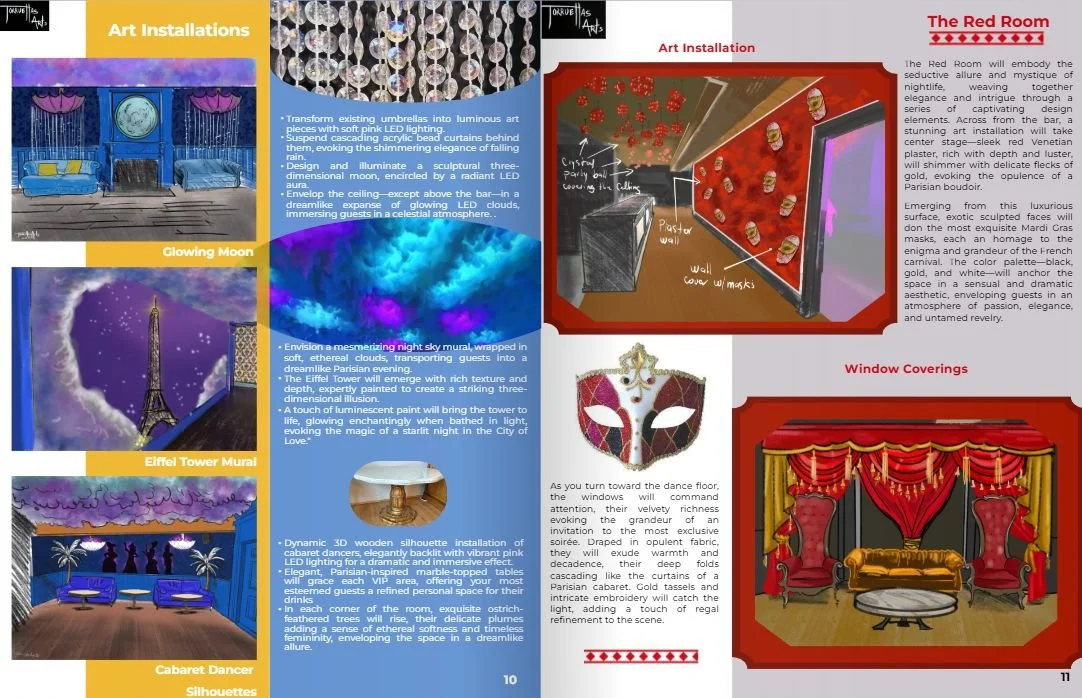Builder of Worlds
Building Worlds Onstage & Off: Lessons from a Moulin Rouge-Inspired Club
If you’ve ever dreamed of stepping into another world—one that feels alive, vibrant, and entirely immersive—you’re in good company. Creating a space that transports people, whether onstage or in a real-world environment, is about more than just decoration; it’s about storytelling, mood, and sensory experience. Here’s a glimpse into some lessons I’ve learned while crafting a Moulin Rouge-inspired world, designed to enchant and delight at every turn.
(The image above shows both the Red Room and Blue Room designs, giving a glimpse of how color, theme, and light work together.)
Immerse Yourself in Inspiration
To build a world that feels authentic, start by fully immersing yourself in theatrical or literary realms. Explore the stories, characters, and aesthetics that ignite your imagination. Then, think about how those ideas can translate into the tactile world: the feel of velvet under your fingertips, the shimmer of sequins catching the light, or the curve of a hand-painted flourish on a wall. Immersion fuels creativity, and the more you’ve “lived” in other worlds, the richer your design will be.
Stick to a Theme and Color Scheme
A cohesive world gives people both comfort and intrigue. In this project, the Red Room bursts with the passion and energy of classic Moulin Rouge reds, deep purples, and gold accents, evoking drama and intimacy. The Blue Room, themed as Paris at night, uses deep blues, muted purples, and pops of pink to create a dreamy, romantic escape. Keeping each room true to its own palette and theme allows visitors to feel fully transported while maintaining a narrative thread across the space.
Consider Light as a Character
Lighting is not just illumination—it’s a storytelling element. In the Blue Room, cloud-shaped ceiling tiles house LEDs that shift between blue, purple, and pink, adding dynamic movement and mood that interacts with the color palette. Thoughtful lighting highlights textures, enhances depth, and transforms surfaces, making the space feel alive and ever-changing.
Use Accent Colors with Purpose
Accent colors are your secret weapon. In this design, gold accents in the Red Room add warmth and sparkle, while pink accents in the Blue Room bring playful contrast and charm. Carefully chosen accents guide the eye, balance the space, and create visual focal points that feel intentional and cohesive.
Building immersive worlds is about curiosity, attention to detail, and playful experimentation. Whether you’re designing a club, a theatre set, or any creative environment, these principles help you transport your audience to a space that feels alive, magical, and unforgettable.
